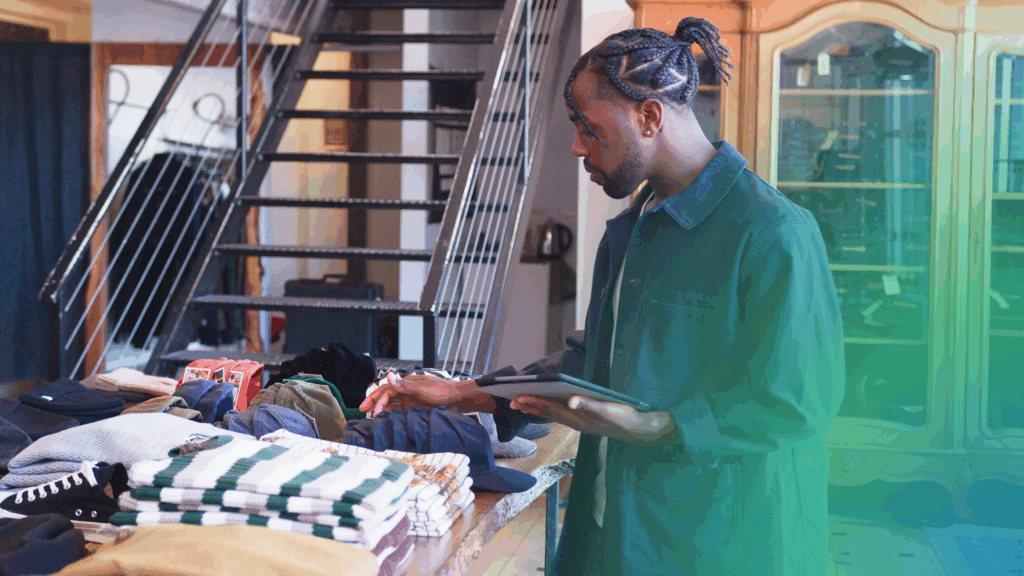Once you have decided on which products you are going to sell and ship to your customers, it is time to consider how you are going to ship them. With so many options to choose from, it’s possible to end up selecting the wrong packing materials, which can cause damaged packages, disappointed customers, and lost profits.
Do not miss out on this opportunity to creating a strong, lasting impression. By packing your products in the right materials, you will gain your customer’s trust, encouraging repeat business as they know you will ship your products to them safely and securely.
Packing Material Considerations
Many factors come into play when selecting the right packing materials for your business. You want to keep time and costs at a minimum, while still providing a pleasant experience for your buyers. Be sure to keep in mind the safety of your packages while in transit, and follow shipping guidelines for fragile or hazardous materials. Your values are also a consideration, such as choosing eco-friendly packing options or easily disposed of materials.
By choosing carefully at the onset, you will avoid wasting time and money on unsatisfactory packaging options. Think about what matters to you, and consider what makes the most sense based on the type of products you are shipping and where you are in your business.
Branded vs. Non-Branded Materials
Non-Branded Materials
Non-branded materials are the plain, no-frills option that most businesses start out with when capital is low. Plain envelopes, cardboard boxes, and packing peanuts are good examples of this method.
Pros of Non-Branded Packaging
Non-branded packaging is often the cheapest option. They are easy to procure and widely available since you are not ordering something unique for your business. Most people are familiar with using them, so you can outsource the packaging process to others with ease. Plain packaging is often preferred by customers who are ordering sensitive products or who value their privacy.
Cons of Non-Branded Packaging
Plain packaging does not encourage social media sharing of the unboxing, or unwrapping, of the product. It can make buyers less likely to order the products as gifts if there is no gift wrapping option available. Non-brand materials leave no impression of your brand, making the experience less memorable.
Branded Packaging
Branded materials are specially ordered, custom packing materials with your business name, logo, and colors. They are often tailored specifically to your products, such as a custom-sized gift box or tissue paper with your brand colors. You can add as many personal touches as desired, to give your customers a unique experience.
Pros of Branded Materials
Branded materials provide instant brand recognition, both to the product recipient and anyone else who sees the package. They lend an air of professionalism, building customer trust. Buyers are more likely to show off their package and product on social media, with unboxing videos and images. You can also include free samples or special discount coupons, all with your company’s branding.
Cons of Branded Materials
Unique packing materials requires extra cost to design and order. They also take up more time, both in ordering the materials and in teaching your employees how to package orders properly. Also, you may find that after investing in branded materials, they may not be the right ones to safely ship your items after all.
Packing Materials for Safe Shipments
Different products require different amounts and types of packaging to ensure that they arrive safely at your customers’ homes. A fragile set of teacups will require more attention to detail and rigorous testing than, say, a set of books.
A good practice is to take a fully packaged product, and subject it to rough handling, such as falling from various heights and angles, shaking, and having heavier parcels stacked on top of it. This quality control now will avoid product loss and disgruntled customers in the future.
Consider some of the most common packing materials as you prepare your products for shipment. These have been well-tested, and when used effectively, are ideal for withstanding the shipping process.
Boxes
Cardboard boxes are the ideal shipping container for most products, as they are sturdy and space efficient. Since most shipping companies base their prices on the box dimensions and weight, you will want to select a box that is just the right size. For added durability, choose a double-walled box to protect the most fragile items. Choose interior boxes when you are selling multiple small objects in a set, or are including gift packaging.
Pros of Boxes
Boxes are easily obtainable and often reusable for many purposes. They come in many sizes and shapes for different applications. They provide suitable protection from the shipping process in many cases, such as if a corner is dented or the box is punctured.
Cons of Boxes
The tiniest of items do not lend themselves to boxes, as tiny boxes are easily lost and hard to print shipping information onto. Oddly shaped items may need custom packaging, such as posters, which do better in cylinders.
Envelopes & Bubble Mailers
Envelopes are an easy way to ship tiny objects and softer products, such as clothing. They often come with bubble wrap padding built-in, saving time and steps.
Pros of Envelopes & Bubble Mailers
They are available in many sizes for a wide range of applications. They fit easily into most mailboxes, so customers do not have to pick up their packages at the post office. Bubble mailers have a plastic coating provide protection from liquids, reducing the chance that the product will be damaged if it were left on the customer’s doorstep in the rain.
Cons of Envelopes & Bubble Mailers
Envelopes can be damaged by punctures and heavy objects stacked on top of them in transit. They are unsuitable for easily broken or warped products, or rectangular objects with sharp corners. Sometimes they can be treated roughly when being placed in mailboxes, causing risk to your shipment.
Bubble Wrap & Air Bags
This plastic filler is designed to be wrapped around fragile items and taped to prevent collision damage. The air-filled pockets provide security without adding considerable weight to the package, minimizing shipping costs.
Pros of Bubble Wrap
It is a cost-effective and reusable packing material that effectively prevents product loss. Customers are accustomed to receiving bubble wrap, and often enjoy the experience of popping the bubbles after receiving their product.
Cons of Bubble Wrap
As a plastic product, it is not biodegradable, which impacts the environment. It is not typically a branded material, which misses a chance to personalize the shipping experience. Cutting and taping bubble wrap can be a time-intensive process.
Tissue & Crinkle-Cut Paper
This fun, colorful insert acts both as a filler, reducing loose space within a package, and as a wrap, making opening the package fun. With many fun colors and patterns available, you can add some creativity to your shipment.
Pros of Tissue Paper
You can select the type and color of tissue paper that matches your brand. By wrapping each item in tissue paper, you show care and attention to detail, which customers love. It is also relatively inexpensive.
Cons of Tissue Paper
It does not lend much protection from shipping hazards, and can be time intensive to implement. By cutting sheets down to size and creating a wrapping process, you can minimize the amount of effort required to wrap and tape each item. Shredded tissue paper is often difficult for customers to dispose of, creating a messy appearance.
Packing Peanuts
Styrofoam packing peanuts both act as a filler and prevent item shifting during shipments. They also offer more protection than other fillers from impact damage, as their shape and density prevents smashing to a degree.
Pros of Packing Peanuts
They are usually a good value for filler packaging, as they are both inexpensive and large enough to fill a package quickly. They offer some protection while shipping, and don’t add considerable weight to the package, minimizing shipping costs.
Cons of Packing Peanuts
Many types of packing peanuts are not eco-friendly, including the traditional styrofoam peanuts, although new types are now available. They tend to fly away when the package is opened, thanks to static electricity. Some customers have a negative association with them, and think they are cheap or less professional. They are often plain, with limited branding options available. While ShipMonk does not utilize packing peanuts, many other fulfillment centers still do.
Kraft Paper Void Fill
Brown kraft paper is often crumpled up and used to fill the space inside packages. This minimizes item shifting and makes the package look full. By packing the kraft paper tightly, filling the voids in the box can work well to prevent both interior and exterior damage.
Pros of Kraft Paper Void Fill
Kraft paper is relatively inexpensive packing material, and can easily be obtained. It takes up little space in the packing area, and can be dispensed into a recycling bin to minimize waste.
Cons of Kraft Paper Void Fill
Depending on who is doing the packaging, kraft paper can be very inconsistent. Variations in technique can reduce its overall effectiveness. Training employees to correctly use the kraft paper can take additional time, increasing costs.
Shipping Hazardous Materials
Some products contain elements which classify them as hazardous materials by shipping companies. For example, lithium batteries in electronics can be dangerous, and liquids can leak while in transit.
Check your shipper’s guidelines for proper packaging and handling rules. You may need to use additional packing materials to be compliant and ensure that your products arrive without issues.
Consider if your products require some of these additional packing materials:
- Gel packs, to keep perishables cool
- Plastic liner bags, to prevent leaks
- Air pillow bags, to prevent shifting during shipping
- Reinforced shipping tape, to completely seal containers
- Branded tamper-evident tape
Conclusion
With careful planning, you can safely ship your products to eager customers around the world, while showcasing what matters to your business. Whether that is stunning customized branding, cost-effectiveness, strength and durability, or eco-consciousness is completely up to you.





